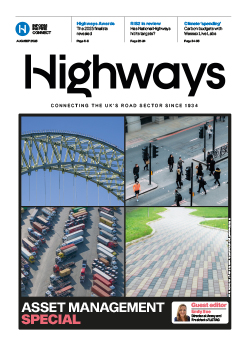A new study using connected vehicles data suggests more than one in 10 journeys break the speed limit across vast swathes of the network, including in high-traffic areas such as London and Merseyside.
The data was obtained exclusively for RoadPeace, the national charity for road crash victims, and analysed by transport data experts Agilysis, as part of National Road Victim Month this August.
The sample size is around 3% of all vehicles - with individual journeys anonymised. The data records how fast the vehicle is moving and the journeys are mapped down to the individual road level, allowing speed limit compliance to be calculated.
Agilysis also calculated both the average and high-end (85th percentile) speeds across the whole road network and matched the information to the known speed limit and traffic volume data, to provide an estimated number of speeding journeys across any part of the road network.
The five most speed-compliant counties (based on data collected between April 2021 and March 2022):
| Police force area | Percentage of journeys exceeding the speed limit |
|---|---|
| North Yorkshire | 3.05% |
| Northamptonshire | 3.94% |
| Durham | 4.43% |
| Central Scotland | 4.90% |
| Lincolnshire | 5.02% |
The five least speed-compliant counties (based on data collected between April 2021 and March 2022):
| Police force area | Percentage of journeys exceeding the speed limit |
|---|---|
| Grampian, Scotland | 12.65% |
| Strathclyde, Scotland | 12.34% |
| London (Metropolitan Police area) | 11.38% |
| Merseyside | 10.39% |
| Cleveland | 9.75% |
Nick Simmons, CEO of RoadPeace, said: 'Several decades ago, drink driving, although illegal, was considered socially acceptable and many drivers thought nothing of getting behind the wheel after they had been drinking.
'Thankfully, after years of education about the huge risks posed by drink driving, the majority of road users would never dream of driving after a drink, and a drink drivers are rightly seen by society as the selfish, reckless people that they are.
'Speeding is a major contributory factor in the majority of collisions on our roads – it shatters lives, destroys families and communities live in fear of it – so why don’t we see speeding as the antisocial epidemic that it is? “We hope by sharing the stories of some of our members, whose lives have been torn apart by speeding drivers, who have courageously told their stories, that people will think twice before putting their foot down. Speeding is selfish, unfair and it puts so many lives at risk.'
In the 30-year period since RoadPeace was formed, between the start of 1992 and the end of 2021, 81,315 were reported killed on British roads and 7,245,833 were reported injured.
The connected vehicle data for the study was provided by Basemap.





